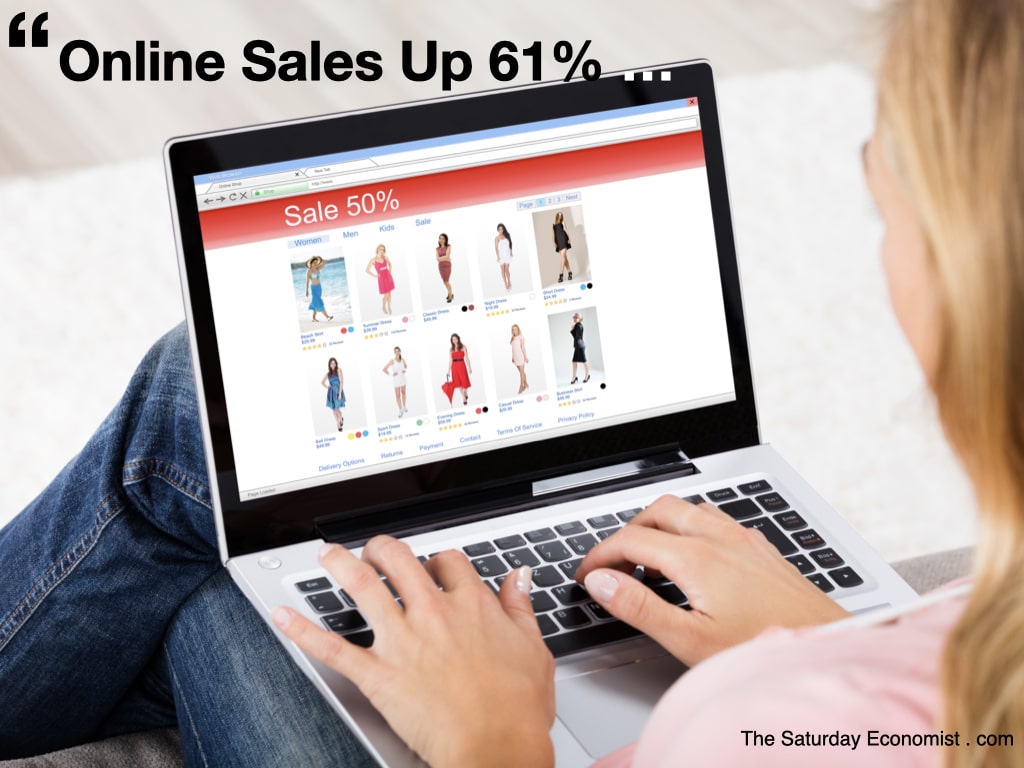|
At first glance, the latest retail figures for December don't look very inspiring. Sales volumes were up by just 2.9% compared to prior year. The value of retail sales increased by just 1.3%. "Stay at home Britain, takes the fizz out of retail sales", the headline in the Times today.
It is important to drill the detail. Shoppers may well have been staying at home. They were taking the opportunity to shop on line. Online sales were up by 61% compared to prior year. Online sales, as a proportion of all retail, averaged 30% in the final quarter. The switch to food sales on line doubled to 11%. The proportion of non food sales, excluding petrol, was near 40%. The challenge for conventional retail is immense. Dig deeper into the data, sales volumes, excluding petrol and fuel, increased by 6.5% over the final three months of the year. Food sales were up by 5%. Gardening products up 9%. Household products were up by 15%. DIY goods were up over 35%. Losers in the spectrum were clothing, footwear and cosmetics. Smart clothing and high heels are losing out. Charles Tyrwhitt, interviewed in the Times today, bemoans the loss of shirt sales in shut down and worries about the casual trend to baseball caps and t-shirts. Pretty Little Thing, on the other hand, celebrates the era of "Athleisure". "Athleisurewear, as everyday wear, is the new black. Still wondering if it's appropriate to wear yoga leggings all day? The answer is yes." You don't even have to, downward face the dog. It's OK just to wear, athleisurewear, without the work out. In this "tale of two economies" analysis is critical. Consumers are spending on retail. They cannot spend in pubs, restaurants, hotels and travel. They will spend on homes and households. Housing activity in December, was the highest end of year performance, since 2006. House prices ended the year up 7.5%. The economy ended on a strong note at the end of year. We expect the lost output in 2020 to have been around 10% for the year as a whole. Prospects for the current year, are overshadowed by the current lock down. We are assuming there may be some release of conditions before the onset of Easter Then growth of almost 5% could be possible for the year as a whole. Andy Haldane, Chief Economist at the Bank of England expects the economy to increase "at a rate of knots" from Q2 onward ... always assuming, of course, we don't get tied up in knots, as government plans unravel ...
0 Comments
Leave a Reply. |
The Saturday EconomistAuthorJohn Ashcroft publishes the Saturday Economist. Join the mailing list for updates on the UK and World Economy. Archives
July 2024
Categories
All
|
| The Saturday Economist |
The material is based upon information which we consider to be reliable but we do not represent that it is accurate or complete and it should not be relied upon as such. We accept no liability for errors, or omissions of opinion or fact. In particular, no reliance should be placed on the comments on trends in financial markets. The presentation should not be construed as the giving of investment advice.
|
The Saturday Economist, weekly updates on the UK economy.
Sign Up Now! Stay Up To Date! | Privacy Policy | Terms and Conditions | |

 RSS Feed
RSS Feed